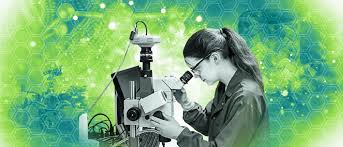The Public’s Understanding of Science and Technology (STS)

Researchers have long studied the public’s understanding of science and technology, or S&T, and have noted changes in attitudes and views over time. The scope of STS includes the nature of S&T, its practices and discourses, its benefits and risks, and its impact on society and human values. For instance, STS research examines the public’s attitude toward certain types of S&T professionals and topics. It is also concerned with the ethics of science and technology.
In simple terms, science is the study of the world’s natural processes and phenomena. Technology is the application of those discoveries and theories. Both science and technology rely on good questions and valid answers. Many people mistakenly believe that science is about using the scientific method to discover new information, but the goal of science is to expand our knowledge. It is the combination of science and technology that makes our society better. Here are some key differences between science and technology.
Science is the systematic study of the physical world. Technology is the application of science to improve our lives. In Oxford Reference, you can find more than 210,000 concise definitions and expert encyclopedia entries in a variety of areas, including technology. Entries are written by trusted experts, and they feature equations, charts, and illustrative line drawings. Aside from being comprehensive, Oxford Reference also features thematic indexes of key concepts in science and technology.
Professional certifications in science and technology are also a good option for expanding employment opportunities. Unlike traditional degrees, these certifications can also serve as a means to stay current on developments in the field. Most professions in science and technology pay above-average salaries. According to the Bureau of Labor Statistics, 83 percent of science and tech-related jobs are characterized by a high salary. In addition to that, professional certifications are offered by universities, nonprofit organizations, and business associations.
Science and technology work hand-in-hand to help advance the human race. A microscope, for example, was probably invented around the same time as the telescope. This instrument relies on the scientific knowledge of light and lenses to make it work. This innovation helped make Galileo’s discoveries possible. Whether or not Galileo invented the microscope is unknown, but it’s a good indicator of the importance of science and technology. When one advances, the other is bound to follow.
Technology is a sword of utility and value. When used correctly, technology can benefit humanity, but excessive use can cause harm to society. Scientists should take responsibility for the use of their knowledge, both direct and indirect. The public needs to know how science and technology are used and what ethical guidelines are in place to protect it. So, a balanced view of science and technology is necessary for its continued use. That’s why science and technology should be closely monitored.
In addition to public perceptions of science and technology, you can find information on the latest advances in the field of your interest. In particular, look up the history of the development of professional groups in the field of science and technology. Professional groups, especially the larger ones, usually have sections focusing on specific fields. The historical development of professional organizations can also serve as a timeline of changes in science and technology. For example, the American Statistical Association maintains sections devoted to specific areas of statistics. These sections are established when enough advancements have occurred in a field to warrant its own section.
MastiKiPathshala is trending informational tips & Tricks related blog.







